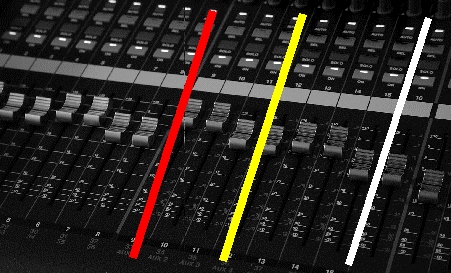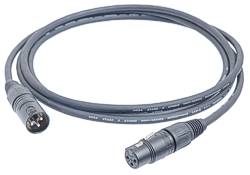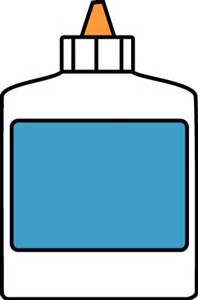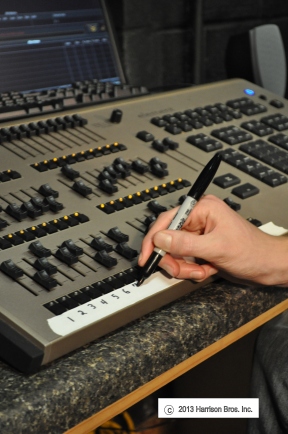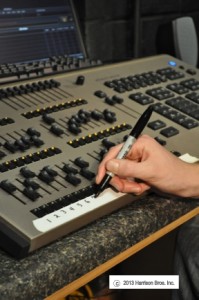Properly marking a sound console with tape can often mean more than just giving a name to each input with paper labeling tape.
Use of large consoles can also be well served by adding some vertical tape lines between input sections to quickly draw your eye to the section of the console that needs attention.
Since each individual slider may have as many as a dozen vertical knobs associated with it (equalization, aux sends, monitor sends, attenuators, etc.), these vertical lines can make it much easier to quickly go to the set of inputs that you want to work on.
Putting different colored tape stripes between logical input sub groups (vocal, keyboards, drums, etc.) can make the sound person’s job much easier.
Our preference for this is to use very thin gaffers tape (1/2 inch), known as “spike tape” in the theatre.

